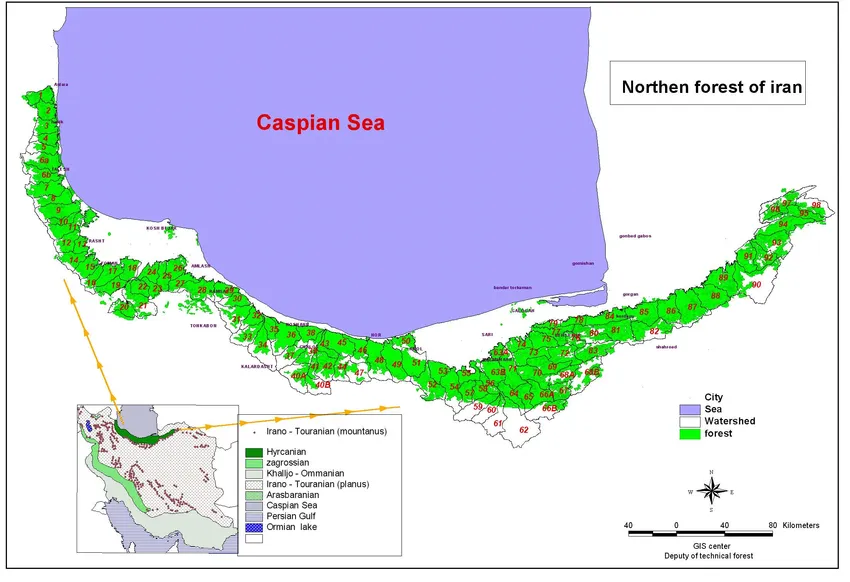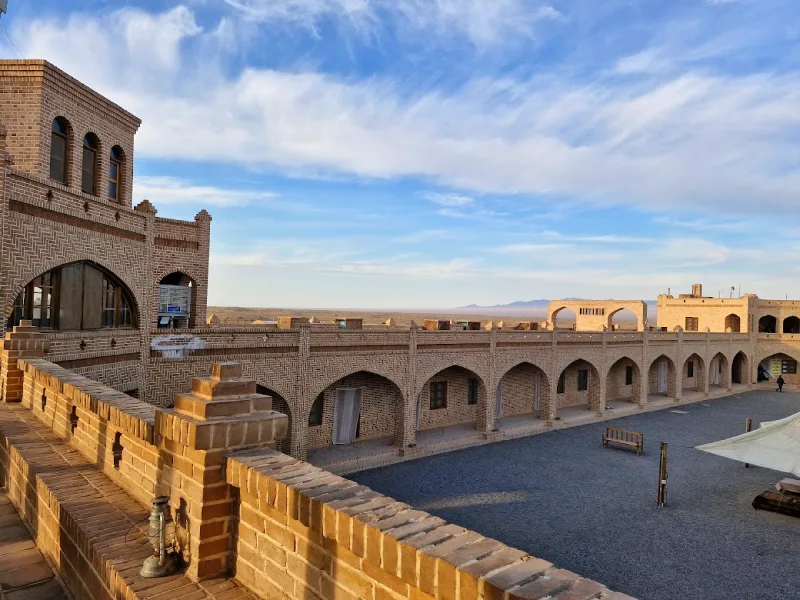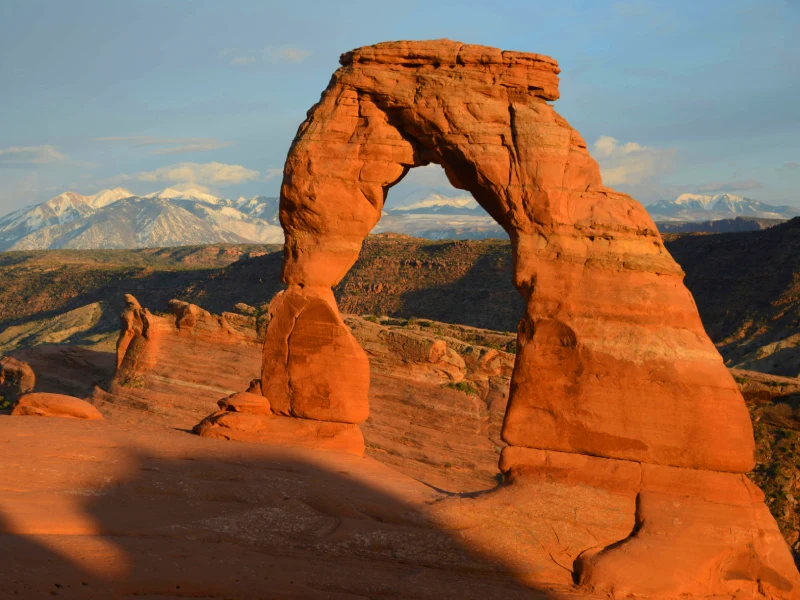Bam Citadel, Iran (History, Photos, Before and After)
Kerman, the city of majestic buildings and historical architecture, is home to one of the largest adobe buildings in the world. The Bam Citadel or Arg-e Bam is the Kerman’s symbol. Arg-e Bam citadel is a popular attraction in this province, and UNESCO lists it as a world heritage. This attraction, looking like a giant sandcastle from a distance, is why any visitor explores this province, and it is one of the must-see destinations in Iran. Let’s take a look at this hiding caste in the sand.
Arg-e Bam Citadel
Bam Citadel, also known as the Arg-e Bam Citadel, is a significant attraction in Iran. Symbol of Iranian cultural heritage and resilience, this citadel is a major destination for many tourists and historians. It is the best place to step into the ancient Persian engineering and architectural prowess.
In 2004, Bam Citadel found its way to the UNESCO World Heritage Site’s list because of its architectural significance and cultural importance.
Today, the Bam Citadel is seen as a symbol of national pride and identity among the people of Iran. It is one of the most important sites in the country that should be well-preserved. If you are around Kerman make sure to visit Bam Citadel as it is one of the top things to do in Kerman.
The Location of Bam Citadel
The location of Bam Citadel is in one of the beautiful provinces of Iran, named Kerman. Kerman province is in the southeastern part of Iran; the citadel is on the outskirts of the city of Bam and is an important urban center in the region, making it highly significant (Location on map).
The desert environment of the citadel adds more beauty since it is situated within the Dasht-e Kavir desert. The surrounding area also adds dramatic landscapes and backgrounds for taking great and fascinating photos.
Notably, the location of Bam Citadel can also be extremely hot during summer and cold in the winter due to its desert location.
Bam Citadel Origin
The origin of the Bam Citadel is believed to be traced back to the Achaemenid Empire. It is considered the oldest adobe structure in the world, and it looks like a military fortress and a center of trade for merchants.

Bam Citadel’s origin is a reflection of how rich the ancient history of Iran is, which is why this site is one of the most important sites for Iranians and attracts many tourists and historians. Moreover, the site was also used in the Sassanian era and has seen significant developments during that period.
Bam Citadel History
As the earliest history of Bam Citadel dates back to the Achaemenid era, this site is the oldest historical site in Iran and has seen several periods and empires. The site was expanded and developed during the Sassanian period and became an important military center.
Later on, with the Islamic conquest of Persia, the citadel was renamed and adapted to new cultures and religious influences. Bam Citadel also thrived during other important periods of Iran, such as the Seljuk and Mongol period, and was turned into a center of art and culture, despite its challenges during the Mongol invasions.
Bam Earthquake
One of the most important events in the history of Iran is the Bam earthquake. The Bam earthquake occurred on December 26, 2003. It was a devastating natural disaster for the people of Iran and had a lot of effects on the city of Bam and society.
The Bam earthquake also had impacts on the iconic Arg-e Bam citadel and had serious effects on this attraction. The registered magnitude of the earthquake was 6.6 Richter, and the epicenter was located near the city of Bam in Kerman. This earthquake resulted in approximately 26,000 deaths and was one of the worst natural disasters in this country.
Bam Citadel Before and After
Before the earthquake, Bam Citadel was one of the largest adobe sites, displaying the Persian ancient Persian architectural techniques. It was a vital part of Iran’s cultural heritage and meant a lot to the Iranian people.
Many scholars would explore this place to discover new things about the history of this country. However, the Bam earthquake affected the site badly and caused catastrophic damage.

It is believed that nearly 85% of the citadel was completely destroyed or damaged, leading to a loss of historical elements. This earthquake also impacted the local community and the global appreciation of Persian history and architecture.
Bam Citadel Reconstruction
After the disaster of the Bam earthquake, Bam Citadel Reconstruction was launched. These extensive restoration efforts focused on rebuilding the citadel using traditional materials and techniques while preserving its historical elements. This method never harmed the authenticity of the structure and focused mainly on restoring it.
Many organizations, such as UNESCO, different NGOs, and the government of Iran, took responsibility for financial and technical assistance. Bam Citadel Reconstruction is still in progress, and the restoration works still continue. Bam Citadel is not a simple symbol anymore, it is a symbol of resilience and cultural revival.
Bam Citadel Photos
Bam Citadel Photos easily shows the design features of this fascinating site. The citadel is built from adobe primarily and helps to regulate the temperature in the arid desert climate of the site.
This architectural style is one of the traditional Persian architectures. Moreover, the citadel is surrounded by imposing walls that were for defense purposes.
The overall layout of the Bam Citadel is about 180,000 square meters, and you can find different sectors such as storage areas, residential quarters, or even public spaces. You can google the Bam Citadel Photos and be fascinated with the design of this sandcastle in Kerman.
Why Visit Arg-e Bam Citadel?
Visiting Bam Citadel can be a great blend of history, architecture, and cultural experiences. Since this building is one of the oldest Adobe sites, you can learn more about the history of ancient Persia, and mainly the Achaemenid era of Iran.
You can explore the traditional Persian architectural techniques and be amazed by the use of mud bricks in building this site. So, this attraction is a perfect spot for an ancient journey into Iran’s history.

Additionally, the surrounding landscape of the Arg-e Bam Citadel is ideal for experiencing breathtaking views and can enhance your journey.
Arg-e Bam Citadel Facts
Arg-e Bam is situated in the Kerman province of southeastern Iran.
Bam Citadel was designated as a UNESCO World Heritage Site in 2004.
The citadel dates back to the Achaemenid era.
The Bam Citadel has thrived through several important periods in Iran.
The site has been continuously inhabited for over 2,000 years.
Arg-e Bam covers an area of approximately 180,000 square meters.
The citadel is primarily constructed of mud bricks.
The Bam earthquake in 2003 caused significant damage to Bam Citadel.
The earthquake resulted in approximately 26,000 deaths and left many more injured.
Bam Citadel is a symbol of resilience.
Suggestions
Visiting Bam Citadel is a must-do activity if you want to get introduced to the history of Iran. You can learn a lot about the ancient Persians by choosing a guided tour, easily gaining in-depth knowledge about this architecture. Moreover, take some time and also explore Bam city, which is close to the Bam citadel.
This city is filled with local bazaars, traditional houses, and many more that can elevate your experience of traveling to Kerman. Also, take your cameras with you to capture every moment. Bam Citadel and Bam City are the historical centers of Iran.
How to Get There?
Bam Citadel is located in Kerman province, and there are many transportation options that one can choose from. The nearest airport to Bam is BXR or Bam Airport, but it only has limited domestic flights. You can also choose the Kerman airport, which is 200 km away from the Bam Citadel. Renting a private car or taking a taxi is also an available option for visiting Bam Citadel.
If you are going to explore Bam Citadel, make sure to bring water and stay hydrated since the climate in that location can be harsh and challenging. Also, don’t forget to dress appropriately for visiting this beautiful and historical landmark in Kerman.
Final Words
Arg-e Bam Citadel is a UNESCO World Heritage and is a famous architecture in Kerman province. This sandcastle, showcasing the deep and rich history of ancient Iranian people, is a must-visit location for those who want to experience the beauties and majesties of this place. Bam Citadel’s origins can even be traced back to the Shahname (Ferdowsi’s great work), and its descriptions can be found in many other historical books.
Are you planning to travel to Iran and looking for an Iran resort? Consider Matinabad Eco-resort.



















































